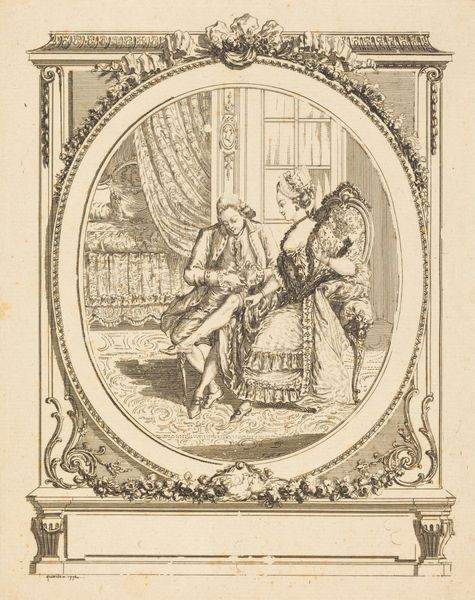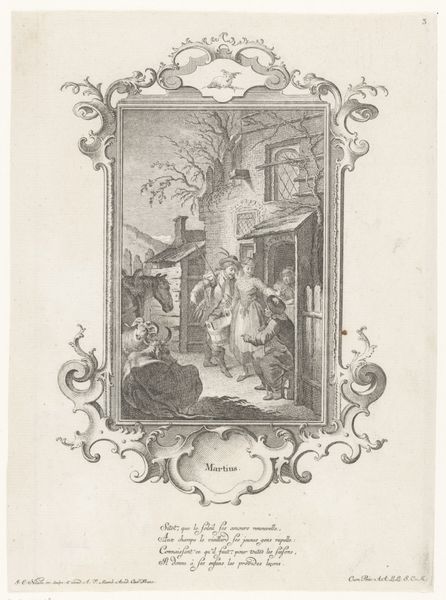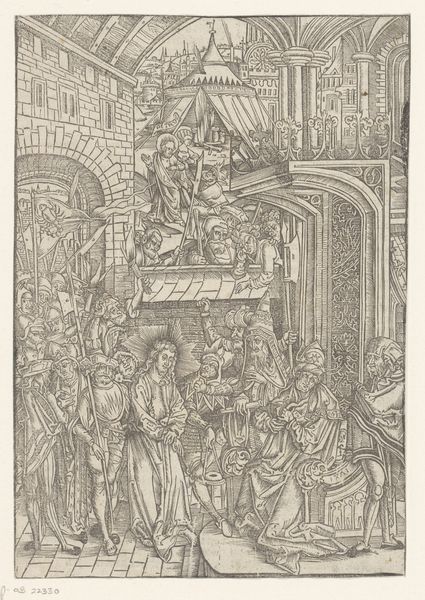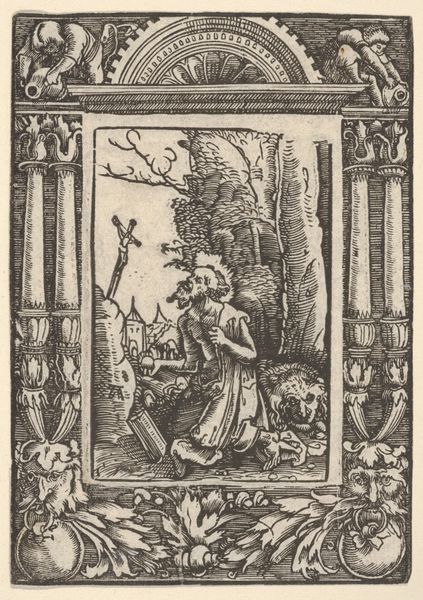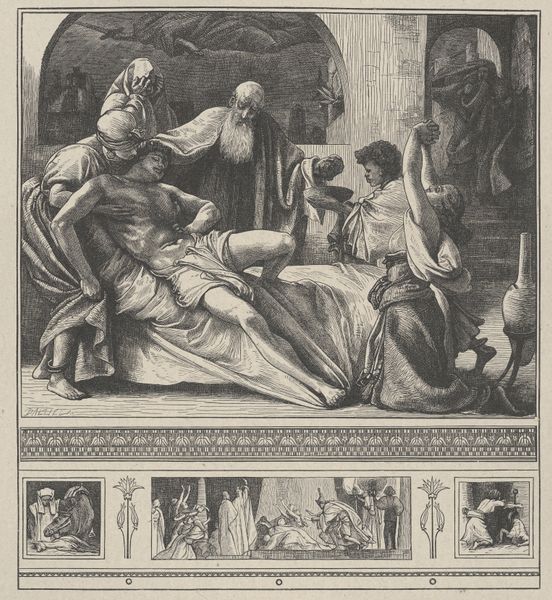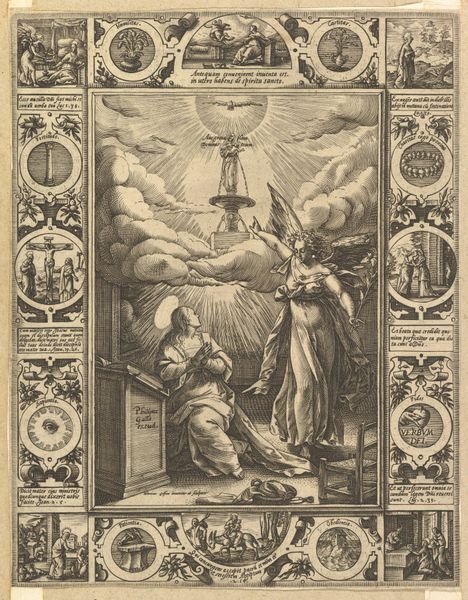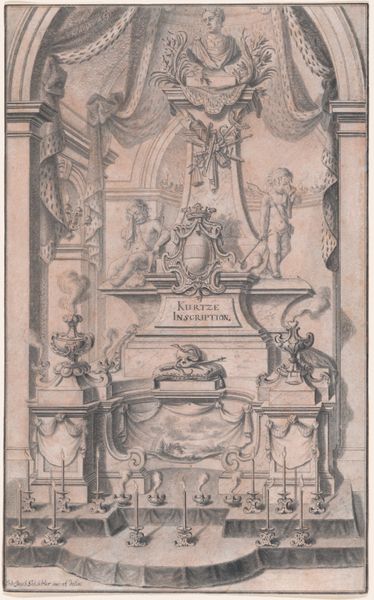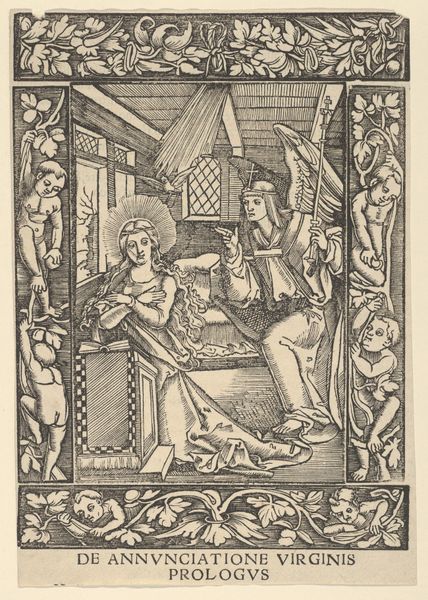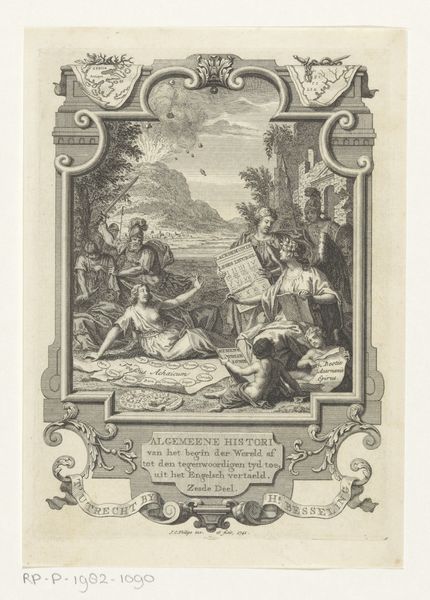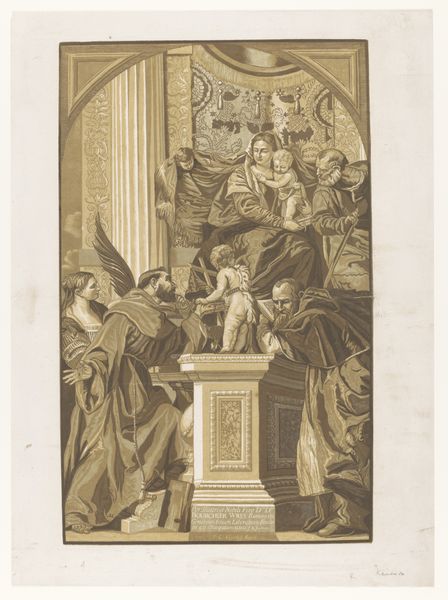
Bathsheba Bathing, from Women's Wile (Weiberlisten) 1522 - 1536
0:00
0:00
drawing, print, intaglio, engraving
#
drawing
#
pen drawing
# print
#
pen illustration
#
pen sketch
#
intaglio
#
figuration
#
ink line art
#
line
#
genre-painting
#
history-painting
#
northern-renaissance
#
engraving
Dimensions: Sheet: 8 3/4 × 6 in. (22.3 × 15.2 cm)
Copyright: Public Domain
Curator: This print captivates with its density of line and detail. It depicts a biblical scene: Bathsheba Bathing, by Hans Burgkmair, dating from the period of 1522 to 1536. Editor: Yes, an intaglio print alive with the meticulous craft typical of the Northern Renaissance. It's so busy though; my initial reaction is a feeling of voyeurism tinged with a subtle unease. It feels morally charged somehow. Curator: Morally charged, how so? As part of the "Women's Wile" series, or Weiberlisten, Burgkmair reflects upon feminine deception. Notice the opulent setting; the private moment is elevated. What visual echoes do you pick up? Editor: Well, there's an incredible contrast in presentation. Bathsheba's vulnerability is almost aggressively put on display against a backdrop of architectural and decorative extravagance. This complicates my viewing. The image feels caught between moralizing judgment and male desire. Were these prints a form of visual propaganda shaping opinions on women in society at the time? Curator: Propaganda may be too strong, but your instinct is solid. Consider that in 16th-century Europe, the story of Bathsheba was employed to teach about the dangers of female allure and lust. Here, look at the architecture, which lends this otherwise private bath a striking sense of public display. But, importantly, Burgkmair doesn't shy from beauty; his Bathsheba, while a figure of warning, also exists as an object of intense, meticulously rendered visual pleasure. Editor: That’s right, that balance holds this moral lesson in tension. This tension certainly heightens the artwork’s dramatic effect but also its relevance to debates of the period about social transgression, sin, gender roles, and social decorum. Curator: A relevant nexus indeed. In that context, these figures rendered in ink lines offer us compelling entry into the cultural values that have shaped us. Editor: I agree. Images such as this serve as touchstones, reflecting cultural narratives and biases that linger even today. This artwork offers insight into the socio-political attitudes toward female desire in sixteenth century Europe, and still today.
Comments
No comments
Be the first to comment and join the conversation on the ultimate creative platform.
